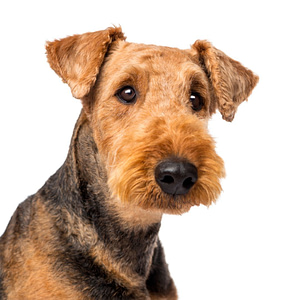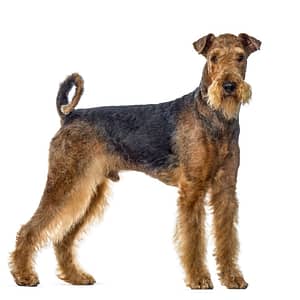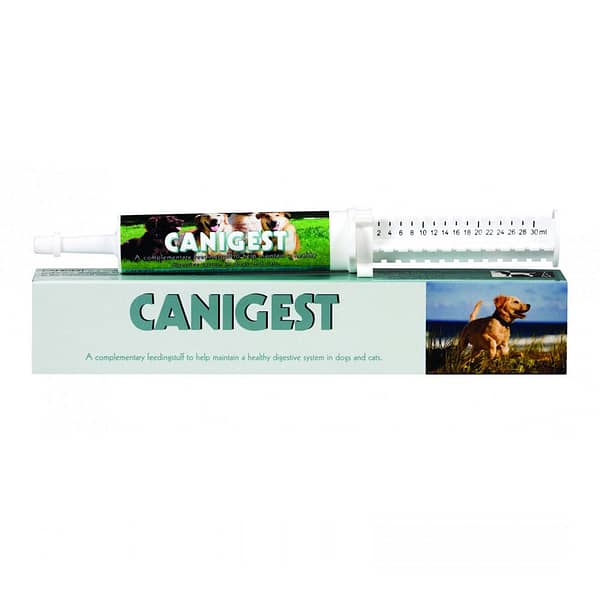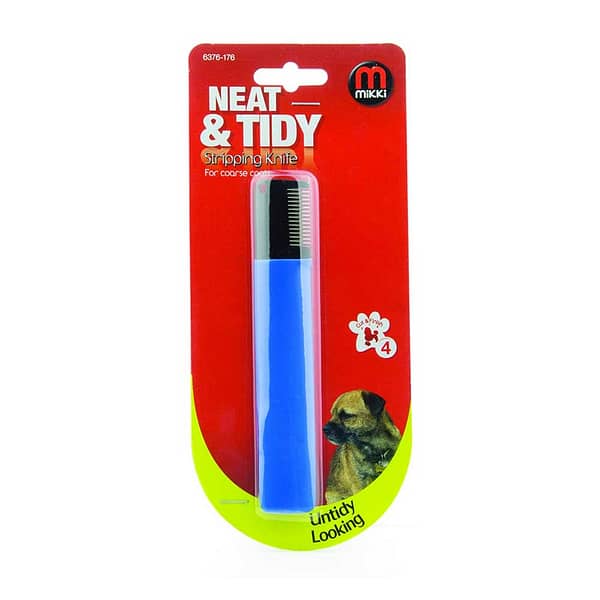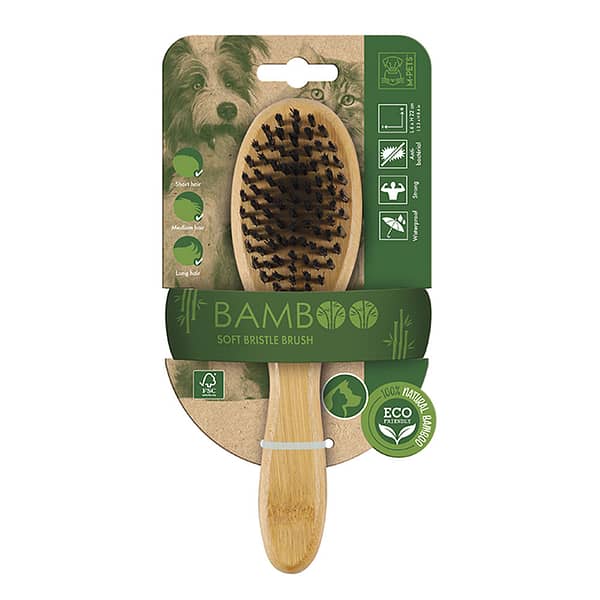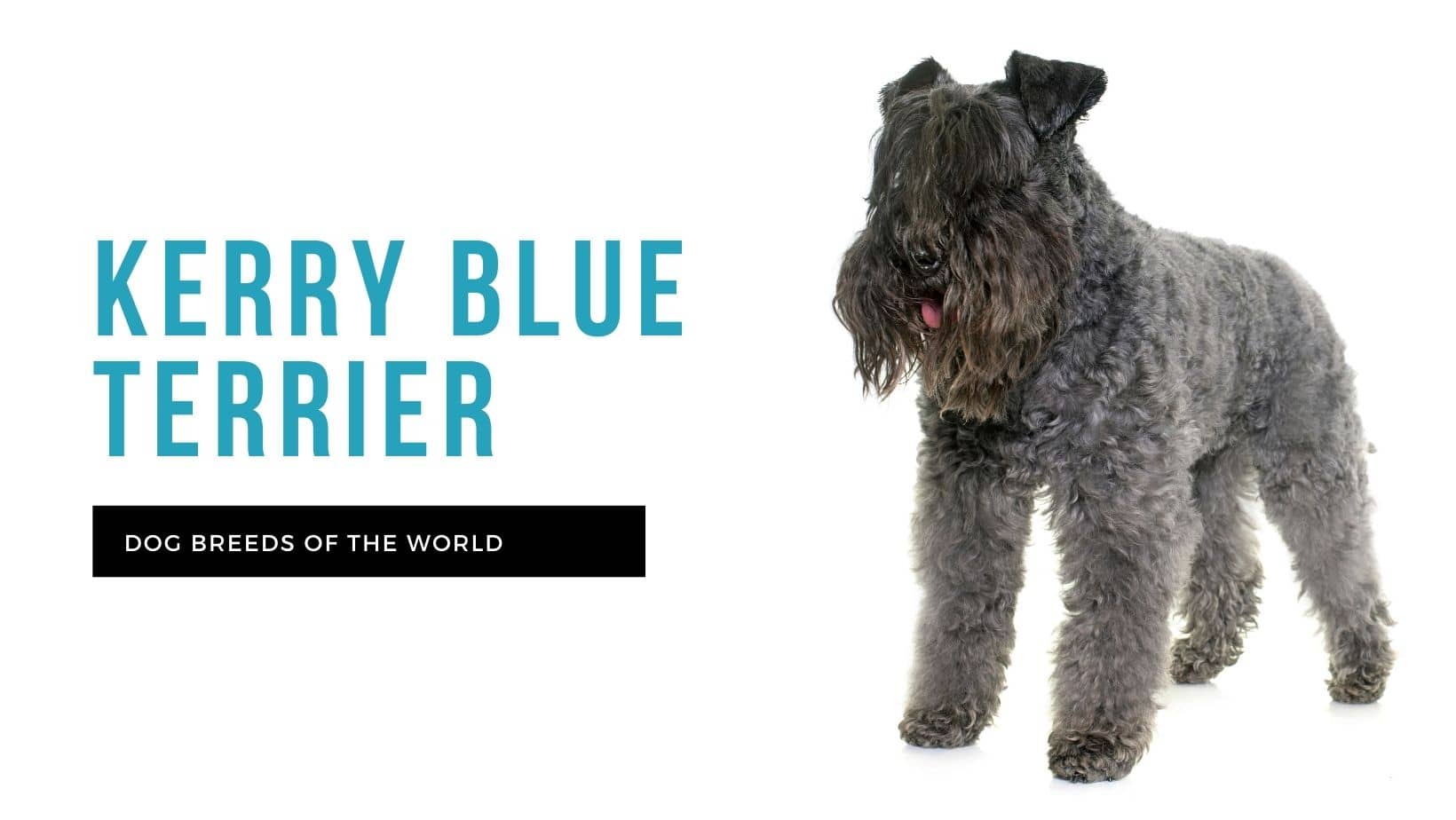
True to his terrier nature, the Airedale terrier is full of energy, strong, confident and fearless. Originally bred to hunt otters and rodents, the ‘King of Terriers’ is the largest of the terrier breeds and has the spirit and independence to match this title.
He is quite a dominant dog, but forms a close bond with his owner and is known to be gentle with children… when properly trained. Despite his terrier origins running thick and fast through his veins, the Airedale terrier also works as a gundog and a working dog, and has served in the army, as a police dog and does impeccable search and rescue.
History
The River Aire runs through the historical West Riding of Yorkshire and it’s this valley (‘dale’) in which the Airedale terrier originated. He was the product of various crossings of black and tan terriers with the otterhound and other breeds – breeding that was done by working-class people – for the purposes of hunting and ratting on land and in water.
From around 1853, it took only 12 years of crossbreeding to produce a terrier that was as competent a ratter as he was a gundog, but also equally impressive as a show dog. In 1864, positive comments about the Airedale terrier (called the Bingley terrier or Waterside terrier back then) by show judge and author Hugh Dalziel raised immediate interest in this new breed. The Airedale terrier was officially named as such in 1886 when the English Kennel Club recognised his origins. Airedales were imported to the US in the late 1800s and became popular show and working dogs by the turn of the century. They landed on South African shores and were shown in Cape Town in 1889.
By the time World War I rolled around, Airedales were used as messengers, carriers, ambulance and Red Cross dogs, as well as guard dogs, ratters and sled dogs. A famous Airedale in World War I, Jack, was just one representative of the devotion and bravery this breed showed in the field, running badly injured through enemy fire to deliver a message before succumbing to his injuries on the spot.
These war stories of bravery as well as Airedale terriers being popular pets of US presidents put the Airedale in the top spot of the most popular breed in America in the 1920s.
Temperament
The Airedale was bred as a working dog and a hunting dog, so he is confident, independent and determined. He is dominant-minded, so his stubbornness can linger very close to the surface and he needs a strong leader when it comes to training.
The Airedale is the complete package embodying a working dog, but he’s still a terrier and will have a strong drive to bark, dig and chase other animals – behaviours that come naturally, yet can be seen as ‘naughty’ by owners who may not know any better. For those who accept and can look past these traits in the breed, the Airedale is lively and busy, and can even have a comical side.
Intelligent and active, the Airedale terrier must not be left alone for long periods of time or he will find his own way of alleviating his boredom. He needs ongoing stimulation, interesting and exciting training sessions, and treats and praise to positively reinforce his desired behaviour.
The Airedale terrier is an excellent watchdog and protector, yet is fun and playful with his family.
Health
Airedale terriers are hardy, healthy dogs, but like any pure breed, they should have clearance certificates for the common problems like hip and elbow dysplasia, eye health, Von Willebrand’s disease and other blood issues, and hypothyroidism.
- Airedales are susceptible to allergies, including food allergies, inhalant allergies and contact allergies.
- Progressive retinal atrophy (PRA) constitutes a range of eye problems that result in the gradual loss of vision because of deterioration in the retina. Most dogs adapt well.
- Some Airedales experience an umbilical hernia, which is generally not life-altering and some go away on their own. The vet will determine how serious the condition is and whether or not to operate to correct it.
- Some Airedales are prone to haemorrhagic gastroenteritis in which blood is present during vomiting and diarrhoea, signalling a trauma, ulcer or other wound somewhere in the digestive system. This condition requires diagnosis through a process of elimination, as blood in the stool or vomit could be a symptom of a range of other conditions.
- Cancer
Exercise Requirements
The Airedale terrier has plenty of energy and loves to be active – he is a working dog after all. As a large terrier, his need for lots of activity must be safely channelled into playtime, a few daily walks, retrieving toys in the water, or even accompanying a jogger on a long-distance route.
In order for these sociable and playful traits to emerge, the Airedale terrier must be socialised from a very young age in lots of different situations with people and animals. As soon as he shows potential for learning, the Airedale should attend obedience training and have basic commands ingrained from early on. Repetitive training does not go down well with the Airedale terrier, so he should be given challenging things to do and praised energetically (and gastronomically) when he succeeds. Similarly, punitive training or any harsh treatment will result in a begrudging dog who is unlikely to easily trust the offender again.
The Airedale’s strong prey drive means he will potentially chase after other dogs and small animals when out on a walk, so it’s critical to get him used to walking on a leash. He needs a big yard in which to expend his extra doses of energy, with a high and reinforced fence. Flowerbeds will need to be fenced off because the Airedale has a natural propensity to dig, especially if he spies other critters in the garden.
Grooming Requirements
The Airedale terrier’s coat consists of a short, wiry topcoat and a softer undercoat. He should be brushed on a weekly basis to remove any dead and shed hair and keep his coat looking good. He will need a bath from time to time, but not too often as this may soften his topcoat.
Show breed Airedales are very specifically groomed, having their coats ‘stripped’ with a stripping knife to keep their coat colours vivid and in show condition. A non-show Airedale does not have to be professionally groomed, but it’s advisable to put some effort into grooming, brushing and trimming the family Airedale to ensure his coat is kept in good condition. Learning to strip his coat is time consuming and not always necessary if he is not going to grace the show arena.
As with all other dogs, the Airedale terrier should have his nails clipped at least once a month; you should not be able to hear them clicking on the floor or paving. Brush his teeth two or three times a week to remove any plaque and tartar build up and keep his mouth healthy.
Ratings
Friendliness to other pets
Friendliness to strangers
Behaviour towards children
Statistics
| Size |
Medium |
| Type |
Terrier group |
| Average adult weight |
20 kg |
| Average adult height |
58 cm |
| Average life span |
12 years |
| Breed family |
|
| Area of origin |
England |
Gallery
Product suggestions
Similar breeds


